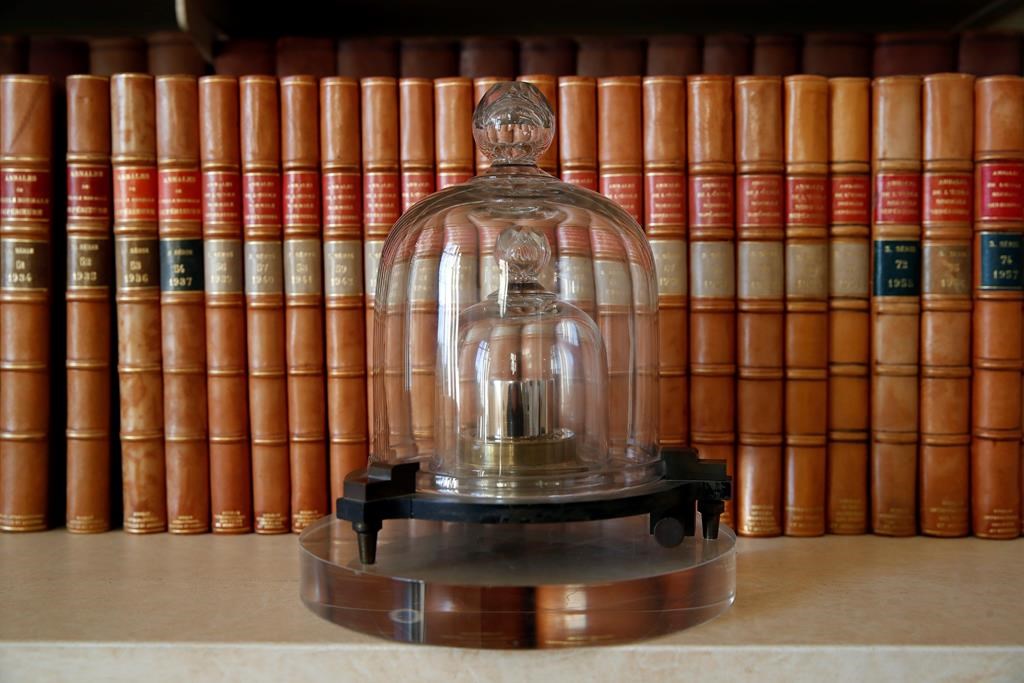The kilogram is changing — but (unfortunately) it’s not going to affect how much you weigh.

At a meeting of the General Conference on Weights and Measures in Versailles, France, countries (including Canada) unanimously voted to approve changes in how certain standard units of measurement are defined.
Currently, we define the weight of a kilogram based on a cylinder of metal that’s locked in a vault in France. Scientists picked that cylinder, called the International Prototype of the Kilogram (or the Grand K), in 1889.
If anything happens to that hunk of metal — if, for example, it erodes or even gets dirty — then the kilogram changes as well.
“We live in a modern world. There are pollutants in the atmosphere that can stick to the mass,” said Dr. Ian Robinson of the National Physical Laboratory in the U.K. “And so when you just get it out of the vault, it’s slightly dirty.”

Get daily National news
“But the whole process of cleaning or handling or using the mass can change its mass.”
“If you were to drop it, it would still be a kilogram, but the mass of the whole world would change,” Stephan Schlamminger of the U.S. National Institute of Standards and Technology said in the Smithsonian Magazine.
WATCH: What defines a kilogram is about to change

This was the same with the metre, which used to be officially defined as the distance between two markers on a metal stick that was kept in a vault in France.
That distance was supposed to be one-ten-millionth of the distance between the North Pole and the equator.
But it’s difficult to recreate that stick accurately so scientists came up with a way the measurement could be recreated in any science lab on earth.
Now, the metre is based on the distance light travels in a vacuum over a certain amount of time (1/299,792,458th of a second); instead of a physical object it’s based on a fundamental principle of the universe.
WATCH: Metre-high emerald found in Brazil

That’s what scientists want to do to the kilogram and three other key units.
How a kilogram is actually changing
The kilogram will be tied to Planck’s constant (known as h), which is the relationship between energy or mass and frequency.
It will still weigh just as much. The amount on your scale — or the amount of fruit you by per kilogram at the grocery store hasn’t changed.
The International Bureau of Measurements says that basing the kilogram, as well as the other standard units on fundamental universal principles, will help spur technological advances.
“Just as the redefinition of the second in 1967 provided the basis for technology that has transformed how we communicate across the globe, through GPS and the internet, the new changes will have wide-reaching impact in science, technology, trade, health and the environment, among many other sectors,” a press release from the bureau reads.
In the vote, countries also unanimously approved updates to three other key units:
- The kelvin for temperature (based on the Boltzmann constant, k)
- The ampere for electrical current (based on the elementary electrical charge, e)
- The mole for the amount of a substance (based on the Avogadro constant, NA)
The changes will come into effect on May 20, 2019.









Comments